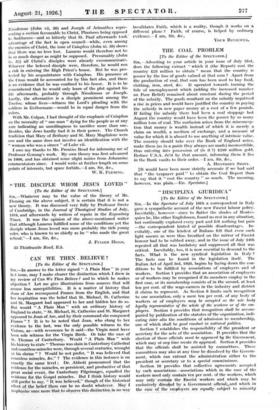CAN WE THEN , BELIEVE ?
[To the Editor of the SPECTATOR.] Sin,-.-In answer to the letter signed "A Plain Man" in your last issue, may I make clearer the distinction which I drew in my review of Can We Then Believe ? and to which he makes objection ? Let me give illustrations from sources that will arouse less susceptibilities. It is a matter of history that Joan of Arc reconquered France from the English, and that her inspiration was the belief that St. Michael, St. Catherine and St. Margaret had appeared to her and bidden her do so. But would "A Plain Man" wish an ordinary history of England to state, "St. Michael, St. Catherine and St. Margaret appeared to Joan of Arc, and by their command she conquered France " ? It is to be noted that Joan, who clung to her evidence to the last, was the only possible witness to the Visions, as—with reverence be it said—the Virgin must have been sole witness for the Virgin Birth. Or take the case of St. Thomas of Canterbury. Would "A Plain Man" wish his history to state" Thomas was slain in Canterbury Cathedral and countless miracles were, through several centuries, wrought at his shrine " ? Would he not prefer, "It was believed that countless miracles, &c." ? The evidence in this instance is on exactly the same level ; Dr. Abbott pronounced that the evidence for the miracles, so persistent, and productive of that great social event, the Canterbury Pilgrimages, equalled the evidence for the Gospel miracles. But I think history would Still prefer to say, "It was believed," though of the historical effect of the belief -there can be no doubt whatever. May I elliPhze once more that to observe this distinction in no way
invalidates. Faith, which is a reality, though. it works on a different plane ? Faith, of course, is helped by ordinary evidenec.—I am, Sir, &c.,
YOUR REVILWER.


































 Previous page
Previous page